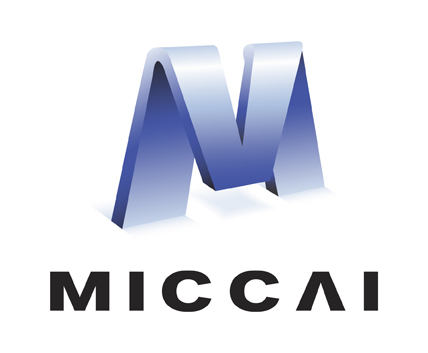Abstract
Autism spectrum disorder (ASD) is one of the most common neurodevelopmental disorders, which impairs the communication and interaction ability of patients. Intensive intervention in early ASD can effectively improve symptoms, so the diagnosis of ASD children receives significant attention. However, clinical assessment relies on experienced diagnosticians, which makes the diagnosis of ASD children difficult to popularize, especially in remote areas. In this paper, we propose a simple yet effective pipeline to diagnose ASD children, which comprises a convenient and fast strategy of video acquisition and an advanced deep learning framework. In our framework, firstly, we extract sufficient head-related features from the collected videos by a generic toolbox. Secondly, we propose a head-related characteristic (HRC) attention mechanism to select the most discriminative disease-related features adaptively. Finally, a convolutional neural network is used to diagnose ASD children by exploring the temporal information from the selected features. We also build a video dataset based on our strategy of video acquisition that contains 82 children to verify the effectiveness of the proposed pipeline. Experiments on this dataset show that our deep learning framework achieves a superior performance of ASD children diagnosis. The code and dataset will be available at https://github.com/xiaotaiyangcmm/DASD.
Access this chapter
Tax calculation will be finalised at checkout
Purchases are for personal use only
Similar content being viewed by others
References
Association, A.P., et al.: Diagnostic and statistical manual of mental disorders (DSM-5®). American Psychiatric Publishing (2013)
Baltrusaitis, T., Zadeh, A., Lim, Y.C., Morency, L.P.: Openface 2.0: facial behavior analysis toolkit. In: 2018 13th IEEE International Conference on Automatic Face & Gesture Recognition (FG 2018), pp. 59–66. IEEE (2018)
Ekman, P., Friesen, W.V.: Facial action coding system. Environ. Psychol. Nonverbal Behav. (1978)
Elsabbagh, M., et al.: Global prevalence of autism and other pervasive developmental disorders. Autism Res. 5(3), 160–179 (2012)
He, K., Zhang, X., Ren, S., Sun, J.: Deep residual learning for image recognition. In: Proceedings of the IEEE Conference on Computer Vision and Pattern Recognition, pp. 770–778 (2016)
Kingma, D.P., Ba, J.: Adam: a method for stochastic optimization. arXiv preprint arXiv:1412.6980 (2014)
Li, B., et al.: A facial affect analysis system for autism spectrum disorder. In: 2019 IEEE International Conference on Image Processing (ICIP), pp. 4549–4553. IEEE (2019)
Li, J., Zhong, Y., Han, J., Ouyang, G., Li, X., Liu, H.: Classifying ASD children with LSTM based on raw videos. Neurocomputing 390, 226–238 (2020)
Liu, X., Wu, Q., Zhao, W., Luo, X.: Technology-facilitated diagnosis and treatment of individuals with autism spectrum disorder: an engineering perspective. Appl. Sci. 7(10), 1051 (2017)
Lord, C., et al.: The autism diagnostic observation schedule-generic: a standard measure of social and communication deficits associated with the spectrum of autism. J. Autism Dev. Disord. 30(3), 205–223 (2000)
Mehta, S., Rastegari, M., Shapiro, L., Hajishirzi, H.: Espnetv2: a light-weight, power efficient, and general purpose convolutional neural network. In: Proceedings of the IEEE/CVF Conference on Computer Vision and Pattern Recognition, pp. 9190–9200 (2019)
Pérez-García, F., Scott, C., Sparks, R., Diehl, B., Ourselin, S.: Transfer learning of deep spatiotemporal networks to model arbitrarily long videos of seizures. In: de Bruijne, M., et al. (eds.) MICCAI 2021. LNCS, vol. 12905, pp. 334–344. Springer, Cham (2021). https://doi.org/10.1007/978-3-030-87240-3_32
Sandler, M., Howard, A., Zhu, M., Zhmoginov, A., Chen, L.C.: Mobilenetv 2: inverted residuals and linear bottlenecks. In: Proceedings of the IEEE Conference on Computer Vision and Pattern Recognition, pp. 4510–4520 (2018)
Selvaraju, R.R., Cogswell, M., Das, A., Vedantam, R., Parikh, D., Batra, D.: Grad-cam: visual explanations from deep networks via gradient-based localization. In: Proceedings of the IEEE International Conference on Computer Vision, pp. 618–626 (2017)
Tamilarasi, F.C., Shanmugam, J.: Convolutional neural network based autism classification. In: 2020 5th International Conference on Communication and Electronics Systems (ICCES), pp. 1208–1212. IEEE (2020)
Warren, Z., McPheeters, M.L., Sathe, N., Foss-Feig, J.H., Glasser, A., Veenstra-VanderWeele, J.: A systematic review of early intensive intervention for autism spectrum disorders. Pediatrics 127(5), e1303–e1311 (2011)
Xie, S., Girshick, R., Dollár, P., Tu, Z., He, K.: Aggregated residual transformations for deep neural networks. In: Proceedings of the IEEE Conference on Computer Vision and Pattern Recognition, pp. 1492–1500 (2017)
Zhao, Z., et al.: Atypical head movement during face-to-face interaction in children with autism spectrum disorder. Autism Res. 14(6), 1197–1208 (2021)
Zhao, Z., et al.: Identifying autism with head movement features by implementing machine learning algorithms. J. Autism Dev. Disord. 52, 1–12 (2021). https://doi.org/10.1007/s10803-021-05179-2
Acknowledgement
This work was supported in part by the National Key R &D Program of China under Grant 2017YFA0700800, the National Natural Science Foundation of China under Grant 62021001, and the University Synergy Innovation Program of Anhui Province No. GXXT-2019-025.
Author information
Authors and Affiliations
Corresponding author
Editor information
Editors and Affiliations
1 Electronic supplementary material
Below is the link to the electronic supplementary material.
Rights and permissions
Copyright information
© 2022 The Author(s), under exclusive license to Springer Nature Switzerland AG
About this paper
Cite this paper
Cai, M., Li, M., Xiong, Z., Zhao, P., Li, E., Tang, J. (2022). An Advanced Deep Learning Framework for Video-Based Diagnosis of ASD. In: Wang, L., Dou, Q., Fletcher, P.T., Speidel, S., Li, S. (eds) Medical Image Computing and Computer Assisted Intervention – MICCAI 2022. MICCAI 2022. Lecture Notes in Computer Science, vol 13434. Springer, Cham. https://doi.org/10.1007/978-3-031-16440-8_42
Download citation
DOI: https://doi.org/10.1007/978-3-031-16440-8_42
Published:
Publisher Name: Springer, Cham
Print ISBN: 978-3-031-16439-2
Online ISBN: 978-3-031-16440-8
eBook Packages: Computer ScienceComputer Science (R0)





